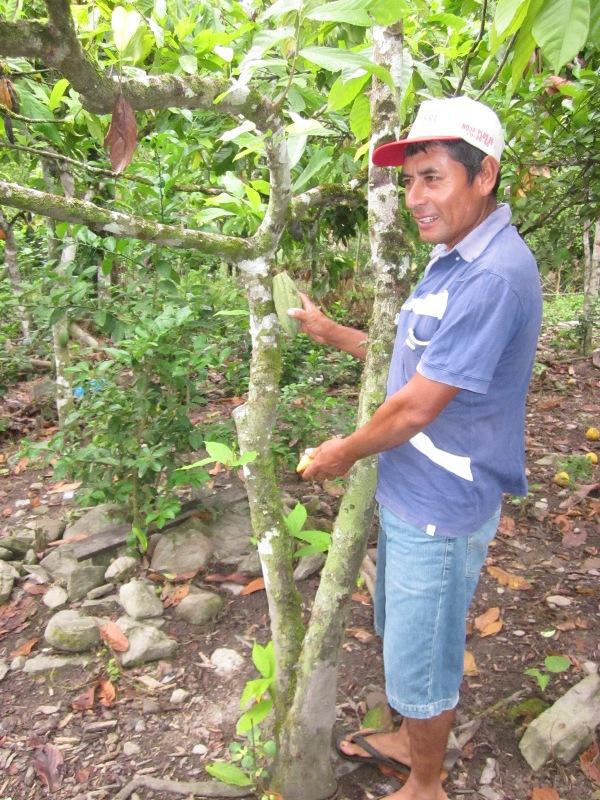Chocolate bars, hot chocolate, chocolate syrup, brownies, chocolate chip cookies, the list goes on. And if your taste buds are anything like mine, you’ve probably run to the store to satisfy a craving at some point. We love our chocolate -- most clearly evidenced by the $700 million Americans spend on Valentine's Day alone.
Globally, around US$80 to $90 billion is spent on chocolate every year. And demand continues to rise as populations and incomes increase around the world. The demand for chocolate is expected to jump by 19% in China this year and by 25% in Indonesia by 2015.
So where does all of this chocolate come from?
Cacao trees thrive in hot, humid climes -- only growing in a narrow zone straddling the Equator. Africa provides a whopping 77% of the world's supply (the main players being the Ivory Coast, Ghana and Nigeria), while Asia and Oceania produce 17%, and the Americas provide 6%.
Unfortunately, the supply of cocoa isn’t growing as quickly as demand. The productivity of cacao farms remains very low and is actually on the decline in some parts of the world.
Farming cacao: No easy task
Have you ever seen the inside of a cocoa bean? Now you have.
Cocoa beans on the tree.
Growing healthy, high-yield cacao trees is no easy task. According to a recent article by two chocolate industry scientists, "The Future of Chocolate," cacao trees are especially vulnerable to pests and fungal infections.
In Brazil in the late 1980s, a fungal disease known as Witches’ Brooms hit hard and reduced production by 80%. Cacao farmers became so discouraged that they abandoned their farms to look for income elsewhere. Viral and fungal problems are also prevalent throughout Latin America and West Africa. In Southeast Asia, moths take a heavy toll.
On top of all that, there are also indications that climate change is making cacao farming more difficult by disrupting water supplies and exacerbating the conditions mentioned above.
Smallholder farmers, who produce around 86% of the world’s cocoa, face even steeper challenges. In West Africa, these farmers struggle to access inputs like seeds, fertilizer and fungicides. Even if they find the financing they need for these items, high-quality inputs are often hard to find.
Additionally, property rights pose a challenge to cacao farming. Cacao trees are a major investment (in time and money), and many farmers resist pouring resources into crop renewal due to the high risk of losing their land. As a result, scientists estimate that smallholder cacao farms yield only a third of their potential.
The trouble with financing
Access to credit is a tough barrier for smallholder farmers. In Nigeria and Cameroon, only 54% and 37% of farmers have access to financing, respectively. In Ghana and Cote d’Ivoire, the rates are much lower. This makes high-quality fertilizers, fungicides and pesticides unaffordable for many farmers, forcing them to rely on low-quality materials bartered from neighbors or other local sources.
Many of the cacao farms in West Africa are old, and the trees yield fewer and fewer beans as they age. Grafting and replanting are legitimate solutions to this problem, but they're prohibitively expensive for most smallholder farmers. Seedlings can take 3 to 5 years before they produce a harvest. During this period, they eat into savings while generating zero income.
Peter Laderach of the International Center for Tropical Agriculture has an apt analogy for the situation:
“Many of these farmers use their cacao trees like ATM machines," he writes. "They pick some pods and sell them to quickly raise cash for school fees or medical expenses. The trees play an absolutely critical role in rural life.”
From this description, it makes sense why farmers wouldn't want to replant their farms, even if they could eventually get higher yields.

In Peru, Kiva borrower Victor is requesting a $775 loan to purchase cacao seed beds, organic fertilizer and tools. He's one of many cacao farmers already on Kiva.
Kiva’s approach
There is some good news, here. The smallholder cacao farmers who manage to improve their yields will see significant increases in their incomes -- particularly given the rising demand for chocolate goods around the world. Furthermore, cacao is harvested twice a year and pods can be picked off of trees weekly or bi-weekly over several months. This differs hugely from the quick harvesting of crops like maize, and provides a mechanism for farmers to bring in steady income throughout the year.
Kiva is currently in talks with a potential Field Partner that supports smallholder cacao farmers in Central America. Its goal is to raise farmers’ incomes by training them in organic, sustainable farming practices, and ensuring controlled fermentation, drying and storage environments. It's also working to connect local farming communities to new, higher-value markets.
We here at Kiva know that the business of growing and maintaining trees is hard work. That's why we hope to partner with like-minded organizations that support cacao and other forms of tree farming by addressing financing, training and access issues first.
Rebekah Chang is an intern for Kiva’s Strategic Initiatives team, looking for new partners and loan products to extend opportunities and access to more people around the world. Rebekah has an M.A. in Development Economics and Conflict Management from Johns Hopkins University School of Advanced International Studies. Send her your feedback on this blog series at blog@kiva.org.
This is part of a larger series on Kiva’s strategic initiatives and innovative loan products, which are designed to expand opportunities for more borrowers across the globe.
This is part of a larger series on Kiva’s strategic initiatives and innovative loan products, which are designed to expand opportunities for more borrowers across the globe.